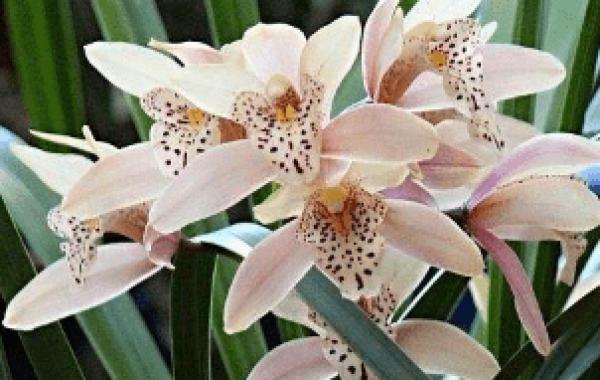What to do after the crab claw orchid is withered?

Crab claw orchid is very popular with foreign friends and is often called Christmas cactus because this flower plant usually blooms around Christmas and is very beautiful when it blooms. However, many people know the maintenance and management of pre-flowering and flowering, but do not know what to do after flowering. So, what about.
In fact, after the flower fade of potted crab claw orchid, we can prune it properly. On the one hand, it can save a lot of nutrients for plants and avoid unnecessary salt consumption of flowers, branches and residual flowers. on the other hand, we can also use the cut stems and leaves for cutting propagation of young plants. Why not do it.
1. Cutting cuttings
The crab claw orchid is combined with pruning after the flower fade to make the cut stems and leaves into cuttings that can be used for cutting. note that if the cut stems and leaves are used for cutting, you can select some healthy leaves and retain 2 stem nodes per leaf, which will make the cutting more successful.
Second, dry the cut
After cutting the cuttings, you need to put them on a paper towel and put them in a warm, ventilated and dark place to dry, usually for several hours, until the cut on the stem nodes is dried before cutting. Otherwise, cutting without drying the wound can easily lead to wound infection and decay.
Third, prepare the soil
Before cutting, we need to prepare the culture soil in advance, we can take peat soil and fine sand according to the proportion of 1:1 and mix well. Of course, we can also use the mixture of peat and perlite to make the slotting machine. And the culture soil should maintain the humidity suitable for cutting to avoid too dry basin soil for cutting, otherwise it is easy to cause new damage to cuttings.
4. Insert cuttings
When cutting, first poke holes of appropriate size and depth in the culture soil, and the depth should be about 3 cm, then insert one end of the cuttings of crab claw orchid to dry the wound, and then gently compact the soil, so as not to float the cuttings to protect them.
5. Proper watering
After the cuttings are finished, we should water them in time, but not too hard in the process. Water can be injected slowly until water flows out from the bottom of the basin. It should be noted that although the watering process is thoroughly watered, the instantaneous amount of water should not be too large, otherwise it is easy to flush the cuttings in the basin.
VI. Covering the film
After watering, in order to create a warm and humid growth environment for cuttings, it is usually recommended to cover them with a plastic bag or use a transparent plastic film to make it easier to observe the germination of cuttings. Because cuttings of crab claw orchid usually germinate in an environment with suitable temperature and humidity.
VII. Maintenance and management
Before the cuttings germinate, we should do the corresponding maintenance and management work. During this period, it is especially necessary to do a good job in moisturizing the cultivated soil, and at the same time, the film needs to be properly ventilated at noon to exchange air, which is more conducive to leaf germination. If all goes well, you can usually see cuttings rooting and sprouting after 6 weeks. At that time, we can also remove the plastic film or plastic bag on the outside.
Related
- Is the orchid suitable for indoor use? Is it good for the body?
- How to prevent the empty root of orchids?
- What to do after the crab claw orchid is withered?
- Why are the leaves of orchids always yellow? Fertilizing and watering.
- Can the root of the gentleman orchid be saved if it is rotten?
- Diagnosis and treatment of cotton-blowing beetle insects in Cymbidium
- There is a way for a gentleman's orchid to rot.
- What is the most suitable temperature and humidity for the orchid?
- How to raise a gentleman's orchid? Cultivation techniques of Cymbidium
- How to prepare the nutritive soil for the cultivation of Cymbidium



